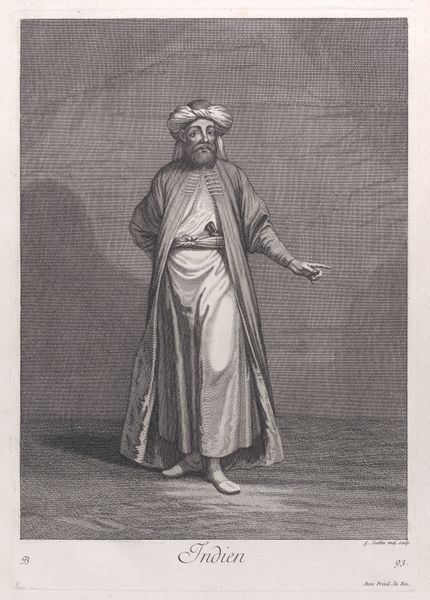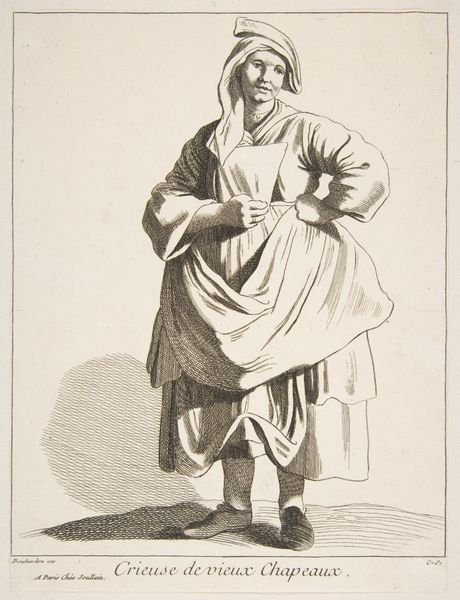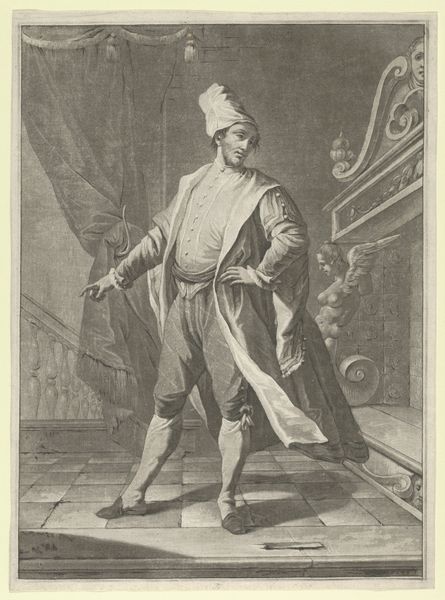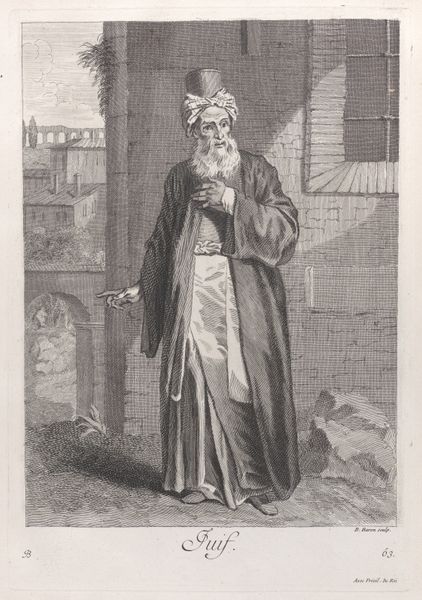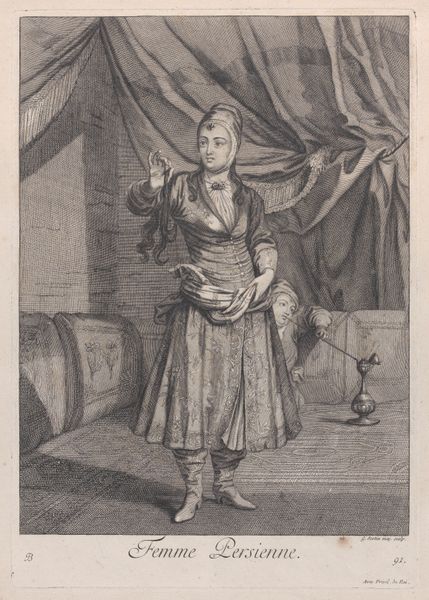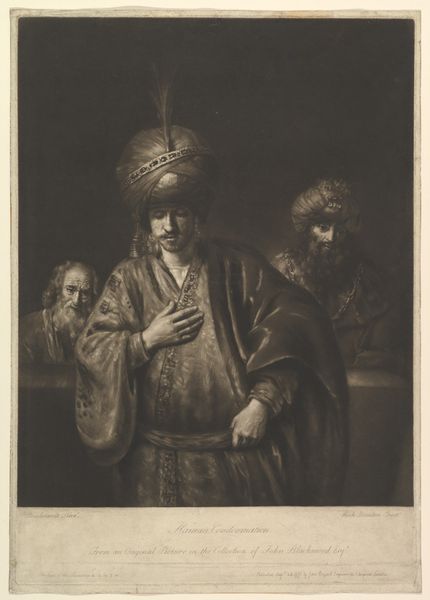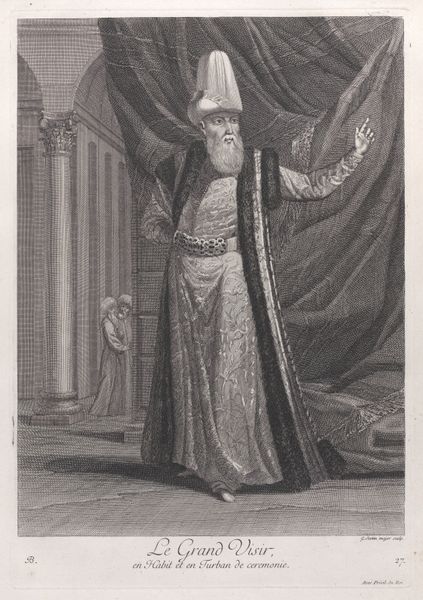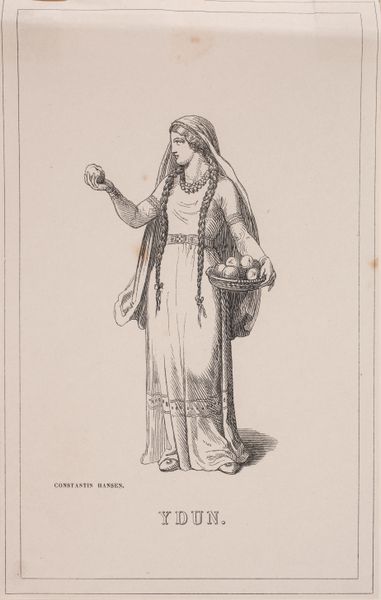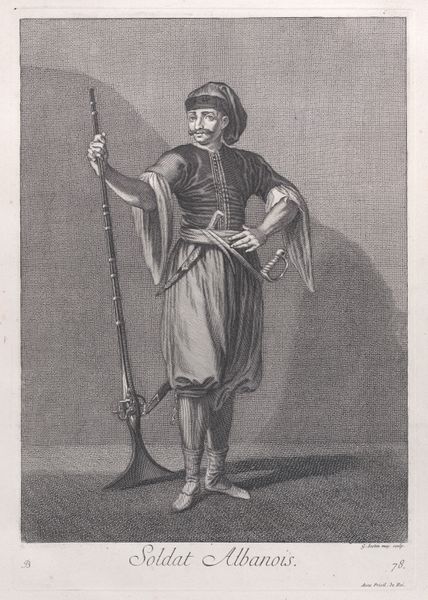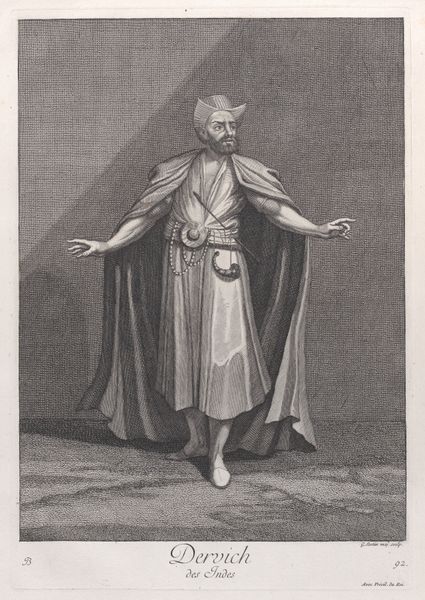
Barbier ambulant, plate 58 from "Recueil de cent estampes représentent differentes nations du Levant" 1714 - 1715
0:00
0:00
drawing, print
#
portrait
#
drawing
#
baroque
# print
#
orientalism
#
men
#
portrait drawing
#
genre-painting
Dimensions: Sheet: 16 1/2 × 11 15/16 in. (41.9 × 30.3 cm) Plate: 14 1/16 × 9 13/16 in. (35.7 × 24.9 cm)
Copyright: Public Domain
Curator: Here we have “Barbier ambulant, plate 58 from ‘Recueil de cent estampes représentent differentes nations du Levant’” created by Jean Baptiste Vanmour around 1714-1715. The work, currently held at the Metropolitan Museum of Art, uses printmaking to depict a wandering barber. Editor: My immediate impression is one of staged serenity, despite the potential chaos implied by someone offering their services in public. It's meticulously rendered. Curator: Indeed. Vanmour, commissioned by the French ambassador in Constantinople, meticulously documented the costumes, trades, and social classes of the Ottoman Empire. This particular print allows us to consider the material aspects of everyday life for this ambulant barber, his tools, his dress. What did this look like to those at the time it was produced, consumed and received? Editor: I'm struck by the politics inherent in depicting “different nations of the Levant”. This piece comes from a specific historical and cultural moment rooted in early European Orientalism. There’s a power dynamic implied when depicting ‘the other’. How do we reconcile our contemporary awareness with this piece? Curator: The artist’s labor here cannot be understated. We need to question where exactly his studio was. His access to his material. This image presents more questions about its construction. Vanmour's location allows a closer inspection of its source, whether from direct observation or reproduction, is fascinating from a labor standpoint. How did this production impact contemporary tastes and further imperial ambitions? Editor: Exactly. What stories might this barber himself have told? By whose standards of beauty and cleanliness was he operating? These are largely invisible within Vanmour's work but critical to uncovering the full picture, wouldn't you agree? Curator: Absolutely, which brings us back to considering the work of the printing processes during the time, especially regarding depictions of everyday commodities. What was considered appealing to the audiences of that era? Editor: Ultimately, analyzing Vanmour’s "Barbier ambulant" urges us to question what biases we carry while studying early Orientalist depictions and what can we discover about labor by deconstructing this drawing, or others like it, beyond what they initially propose.
Comments
No comments
Be the first to comment and join the conversation on the ultimate creative platform.
